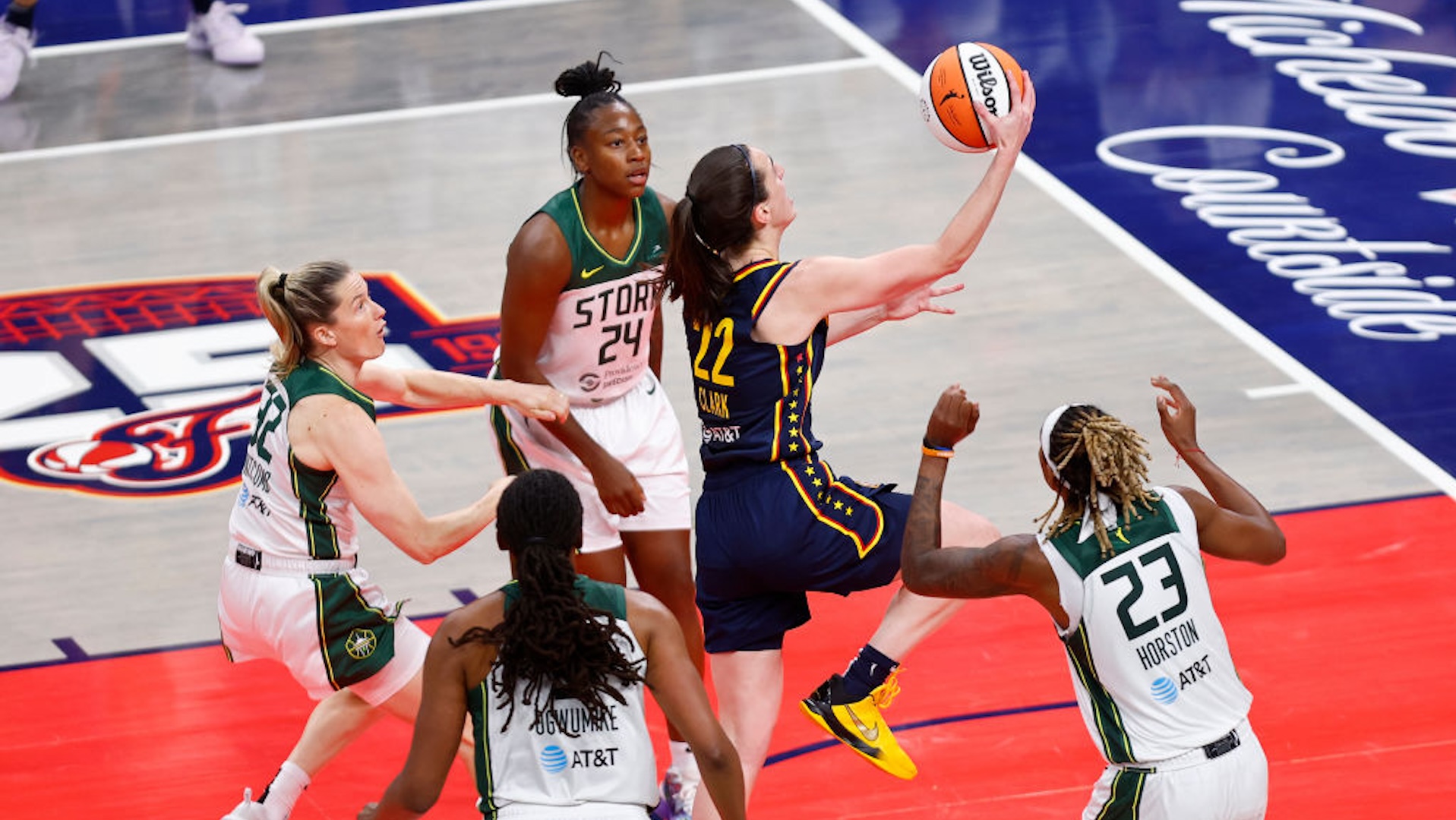The Indiana Fever started their post-Olympic portion of the season with a party. On Friday night, they scored 98 points against the Phoenix Mercury, winning by nine in a game where Caitlin Clark popped off for 29 points and 10 assists. Sunday's game against the Seattle Storm, however, promised to be an altogether different experience. It's one thing for a well-rested Clark and the Fever to run up the score on an opponent as defense-averse as the Mercury, but the Storm don't tend to make life easy on opposing offenses. The Fever shredded them anyway, winning Sunday's game 92-75.
The Storm are a good team, and their method for compiling wins this season has been pretty simple: Strangle the other team's offense, and shoot just well enough at the other end to come out ahead. Seattle's had an easier time this year achieving that first step, as they came into Sunday's game sporting the second-best defensive rating in the league. Consistent shooting has been harder to come by—they rank 10th in the league in effective field goal percentage—but the defense is so good that even an OK shooting night can usually secure a victory. Coming into Sunday's contest, the Storm hadn't lost a game all season in which they shot at least 30 percent from three-point range. That streak has been broken: The Storm shot 33 percent from deep against the Fever and still got smacked by double digits.
It was the defense that let Seattle down this time, but not all at once. The Storm started the game doing what they usually do: constricting the Fever's possessions by not allowing Clark to run her team's offense from a place of comfort. The Storm have the kind of lineup that allows them to do this: Their guards are stout and feisty at the point of attack, their bigs are long and mobile, and they can switch everything. The Fever shot 33 percent from the floor in a first half in which Clark went 3-of-10 from the field and 0-of-5 from three-point range, and Indiana's entire roster was being hunted by Ezi Magbegor. The Storm's do-it-all center knits their whole defensive scheme together with her switchability and rim protection, and she was busy snuffing out possession after possession. She finished the game with five blocks, seven rebounds, and the kind of overall defensive performance that should have her in the running for Defensive Player of the Year.
The thing about a defense like Seattle's is that it's hard to get it scrambling. They're too good and too quick to be made uncomfortable by something as vanilla as a pick-and-roll, even one involving a tandem as potent as Clark and Aliyah Boston. Unlocking a defense like that requires something extra. It requires the kind of audacity that convinces a player to start throwing high-risk/high-reward passes that can instantly destabilize even the most well-drilled defense. Clark started throwing more and more of these passes as the game went on: Perfectly weighted entry passes were squeezed between the fronting defender and the weak-side helper, a one-handed sling shot was whipped from the right block to the left corner at a full sprint, and cross-court passes from the corner to the break negated entire defensive possessions.
Clark finished the game with 23 points and nine assists, and the accretive effect that her passing had on the game was satisfying to watch. Every transition bucket and wide-open three that Clark's playmaking produced seemed to take a little more fight and poise out of the Storm while injecting equal amounts of confidence into the Fever. By the fourth quarter the ball was humming around on every Indiana possession, and the Storm's formerly ferocious defense had been reduced to five exhausted players giving futile chase to the ball and their opponents. The Fever scored 33 points in the fourth quarter and shot 80 percent from the field. This was only the second time all season that the Storm allowed an opponent to score more than 90 points in a regulation game.
This was just the latest in a string of impressive wins for the Fever, who are long past the point of needing to be taken seriously. Indiana was 2-9 on June 3, and had just lost to the Liberty by 36 points. Since then, the Fever have the second-best offensive rating in the league (just ahead of the Aces, just behind the Liberty), and the sixth-best net rating. Indiana's 13-15, in the mix for a playoff spot, and starting to look like a team that can win games not just by getting hot from deep and scoring in transition, but by meeting high-level opponents on equal footing. The Storm are no pushover, and the Fever found a way to put them in the dirt.






